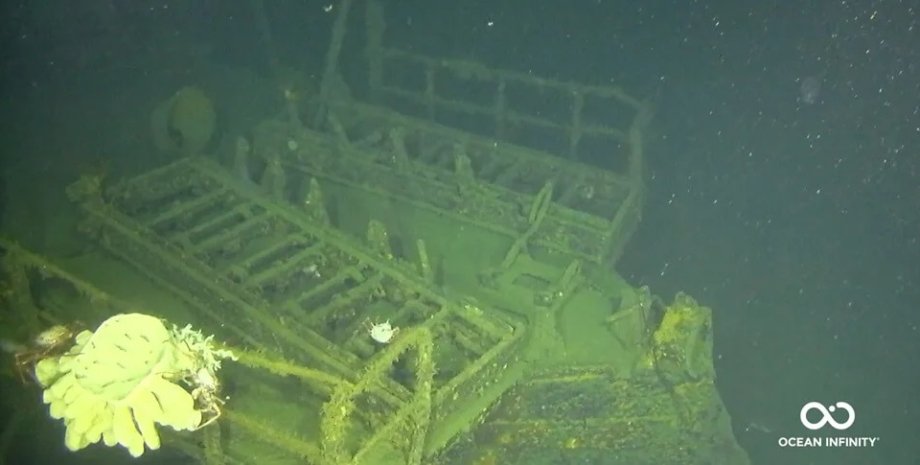
 By Eliza Popova
By Eliza Popova
The fragments of the destroyer were discovered off the coast of California in the Cordel-Bank National Maritime Reserve at a depth of about 1066 meters. It was found with the help of underwater autonomous apparatus for mapping of the seabed. During the day, water drones were autonomously furrowed, scanning almost 50 square miles of the ocean. And as a result, the searches were successful. Three days later, another set of underwater robots took pictures of a historic ship.
Although it is shrouded in algae and is a home for sponges and crabs - a destroyer 95 meters long and stands on the seabed. "This level of conservation is exceptional for the vessel of his age and makes it potentially one of the most well-preserved samples of the US Navy with four pipes known today," said Maria Brown, a superintendent of Cordel Benk National Marine Reserve. The find, made during the demonstration of technology, emphasizes the effectiveness of modern ocean studies.
Ocean Infinity, a maritime robotic firm that controlled drones that made the discovery, has the largest parking fleet in the world of autonomous submarines. Drones are used to create high -resolution seafloor cards - a serious gap in our understanding of the oceans. This technology is also crucial for the choice of places for the construction of wind power plants, oil towers, or for laying routes of underwater pipelines and cables. These robotic fleets are also invaluable to marine archaeologists.
In 2020, Ocean Infinity helped find the fragments of USS Nevada. In 2022, the company also contributed to the re -opening of Endrage, sunken during the Ernest Sheklton expedition in 1915. "I think we are in the process of radical changes in the study of the ocean," said Jim Delgado, Senior Vice President Search, Inc. , companies engaged in marine archeology and participated in the DD-224 opening. Dr. Delgado joined the DD-224 ten years ago.
Marine archaeologists have long been fascinated by the unusual history of the ship. It was started to be built in Philadelphia in September 1919 and lowered to the water for a year, too late to make the USSS Stewart manage to take part in the First World War. But he found himself at the forefront at the beginning of World War II.
In 1941, Stuart was in the Philippines as part of the US Navy, a small union of outdated warships, which was instructed to withstand the pressure of Imperial Japan after its devastating attack on Pearl Harbor. The USSSCSC was damaged during the battle in February 1942, and due to a strange accident, he found himself in the repair Doka in Java, where he was moved by the crew, which left him because the enemies were preparing to seize the island.
The Japanese raised the destroyer, repaired and put into operation in the Imperial Fleet of Japan called Dai-102-Girda ("Patrol Boat No. 102"). Although he never joined a direct battle with the US troops, he was noticed several times by American pilots, who were surprised, finding clearly the American warship in areas held by the Japanese. He retreated with the Japanese troops as the war continued and was damaged during the bombing of the US Army Mokps, Korea, in April 1945.
The Japanese fleet transferred him to Kure on the Japanese Islands, where he was found by US troops after Japan's surrender. Only when the USSC Stewart was found afloat in Japan, the secret of the "ghost ship" was revealed: it became clear that it was a strange, similar to the American destroyer who was seen during hostilities. The shabby veteran was returned to the US Navy during the "emotional ceremony" and towed home to San Francisco.
The American crew, which returned to his homeland, preferred to name the Ramp-224 ship from the abbreviation "Recovered Allied Military Personnel" ("Returned Military Personnel of the Allies")-a term used at that time to refer to released prisoners of war. "This ship, in its own way, was humanized by the Navy. People are inserting so much in the ship-and we do it since the beginning of the time. They represent us," Dr. Delgado said.










All rights reserved IN-Ukraine.info - 2022